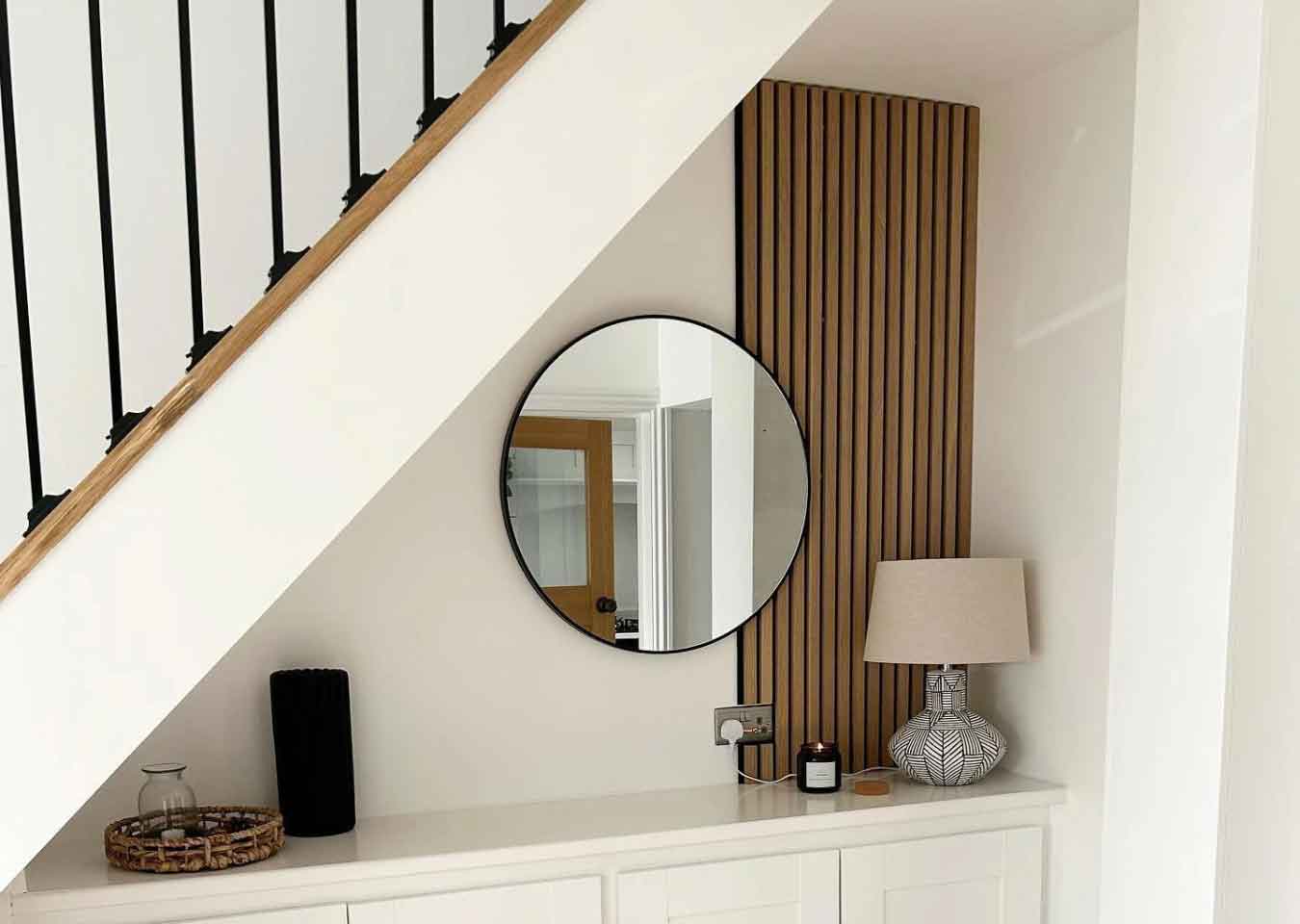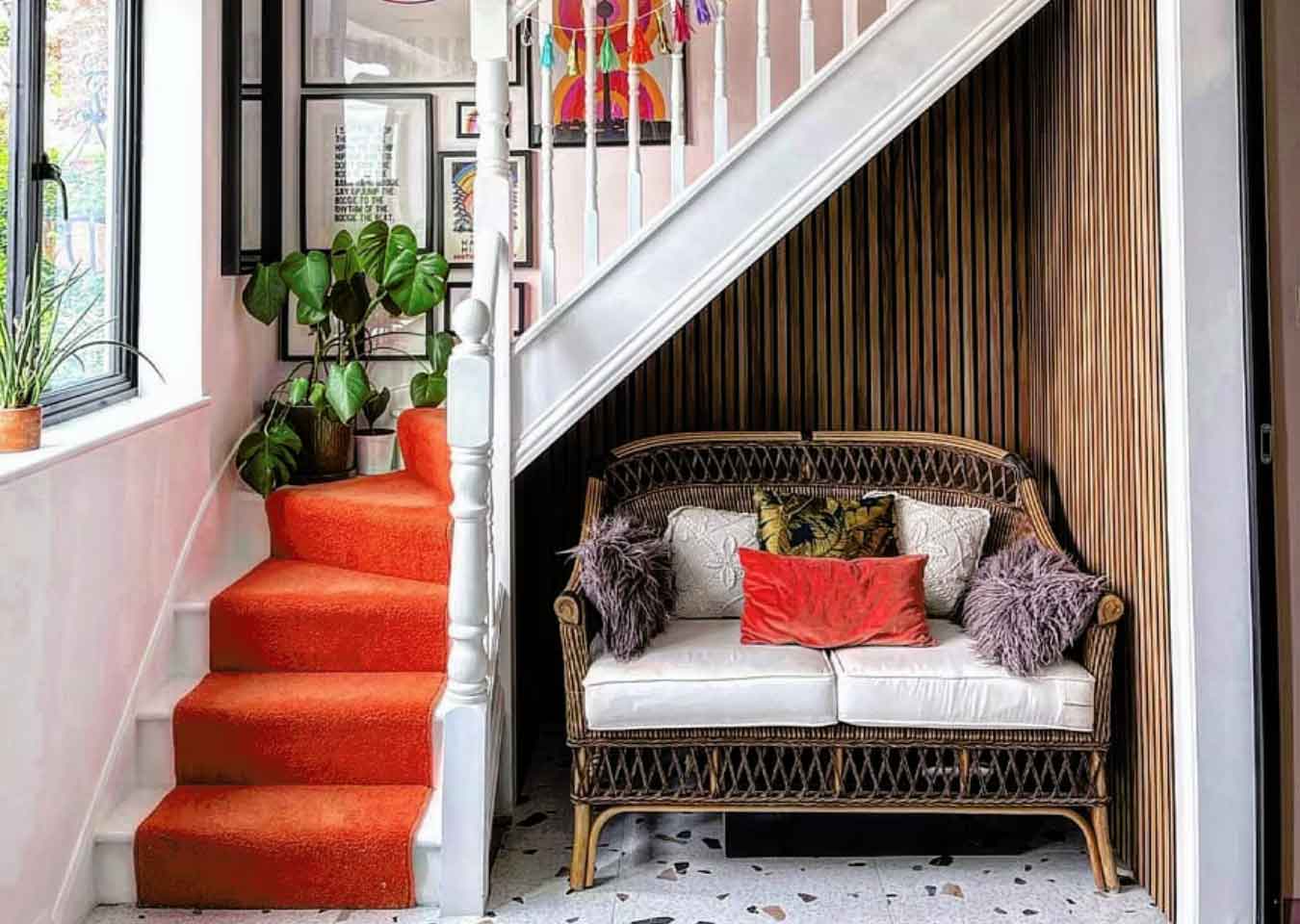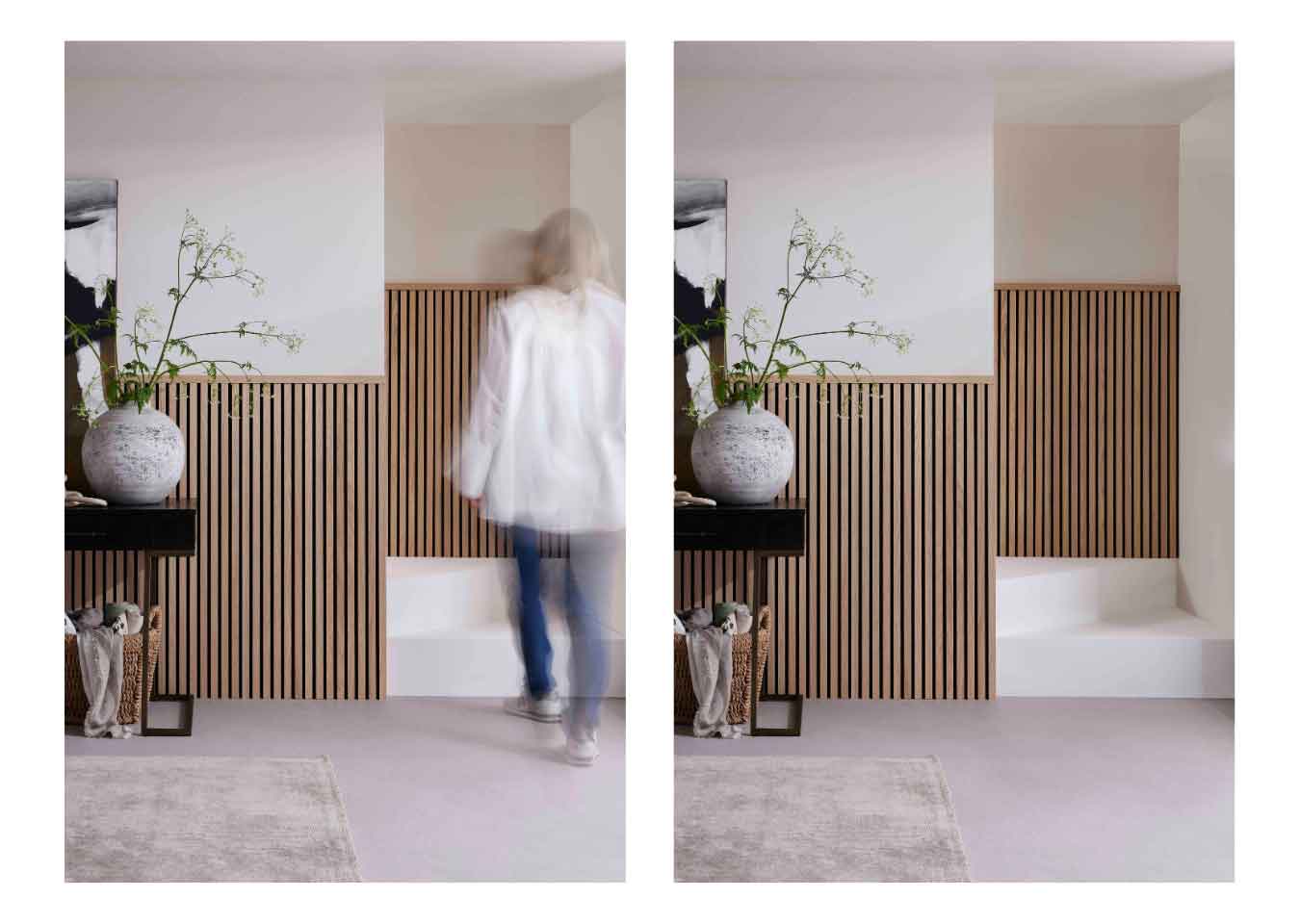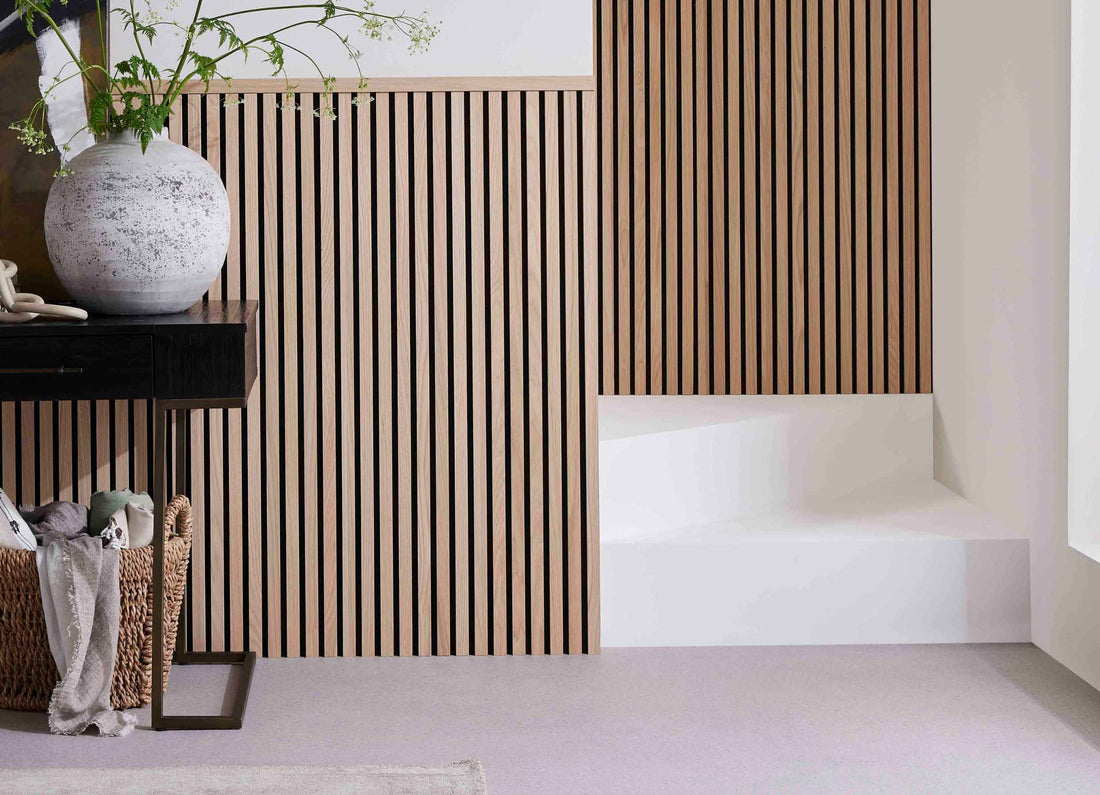There's nothing like a striking staircase to evoke intrigue in your interiors. A flight of steps can be so much more than a passageway between floors; it can be a stunning feature, as proven by these stair panelling ideas.
Panelling is an increasingly popular choice for high-traffic areas like staircases and hallways because it protects the walls from everyday wear and tear while adding character to the space. It's an easy way to transform this sometimes-forgotten area, introducing depth and interest through dimensional detail. It's also low maintenance and easy to clean, making it perfect for enhancing the décor of busy homes.
Explore these five staircase panelling ideas to create an enticing and welcoming space in your home.

1. Half-height Panelling
Add a traditional touch to your transitional space with half-height panelling. Wainscoting is a classic choice for staircase walls as it offers both decorative and practical benefits, protecting the lower section of your wall from knocks, scuffs and scrapes. Go for a trend-transcending vibe with tongue and groove or Shaker-style panelling – designs epitomising timeless elegance. If you want a more contemporary look, opt for half-height slat panelling. Whichever style you choose, you can create cohesion by taking your panelling from the hallway up the steps and into the landing to tie the three areas together.

| Image source: @our1930srenovation_ |
2. Under Stairs Panelling
The space under your stairs doesn't have to be boring. By installing wall panels here, you can combine style and practicality in equal measure. Whether concealing cupboards with a hidden door or adding texture and interest to alcoves or shelving, panelling is your go-to for elevating the space under your stairs. It makes a beautiful backdrop for your interiors, from seating nooks to storage solutions.

|
Image source: @daisywhittakerdesigns
|
3. Zone Your Interior
Zoning is always a clever way to elevate interiors, and it's ideal for busy thoroughfares like stairs and halls because it breaks up the space without creating a barrier. One or two floor-to-ceiling panels are all you need to zone your space – it will create a sense of separation without making the space feel smaller.

| Image source: @rainbowsnfairyd |
4. Add a Pop of Colour
Decorate your stairs in a way that reflects your personal style with painted panelling. The colour combinations are endless with paintable panels as you can coat them in any shade and finish to suit your preference – perfect for putting a unique stamp on your space. If you're using wood panelling to introduce natural tones and textures but still want to incorporate a splash of colour, you can do this through décor like a vibrant stair runner or accent chair. Using a vivid shade in an otherwise neutral scheme will inject personality into the space, making more of a feature out of your staircase.

5. Frame Your Staircase
If your staircase takes centre stage in a large or open-plan space, wall panelling can help you turn it into an eye-catching feature. Panelled partition walls instead of bannisters offer a more modern look and feel while providing a cocooning effect. Using vertical wood panels introduces natural texture and warmth alongside depth and shadowing. This combination of light and shade instantly elevates plain walls with interest. Alternatively, you can let light filter through with gaps in the wall or use individual wood battens to create a custom frame that retains a sense of openness in the space.

